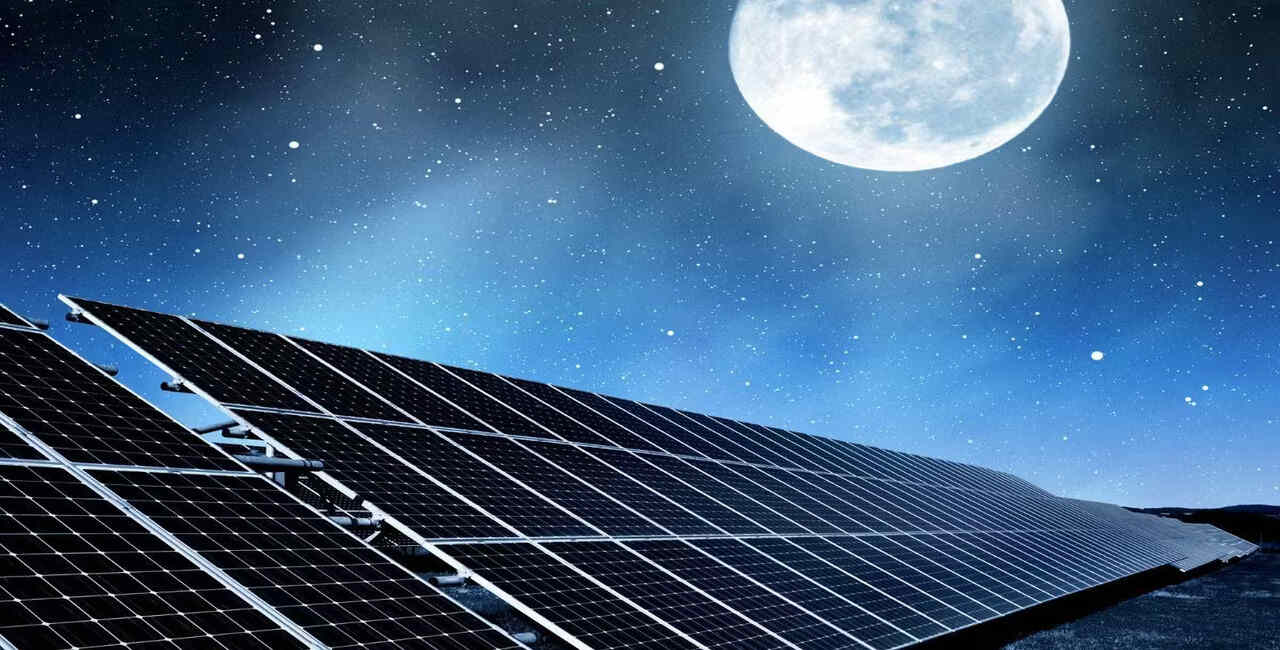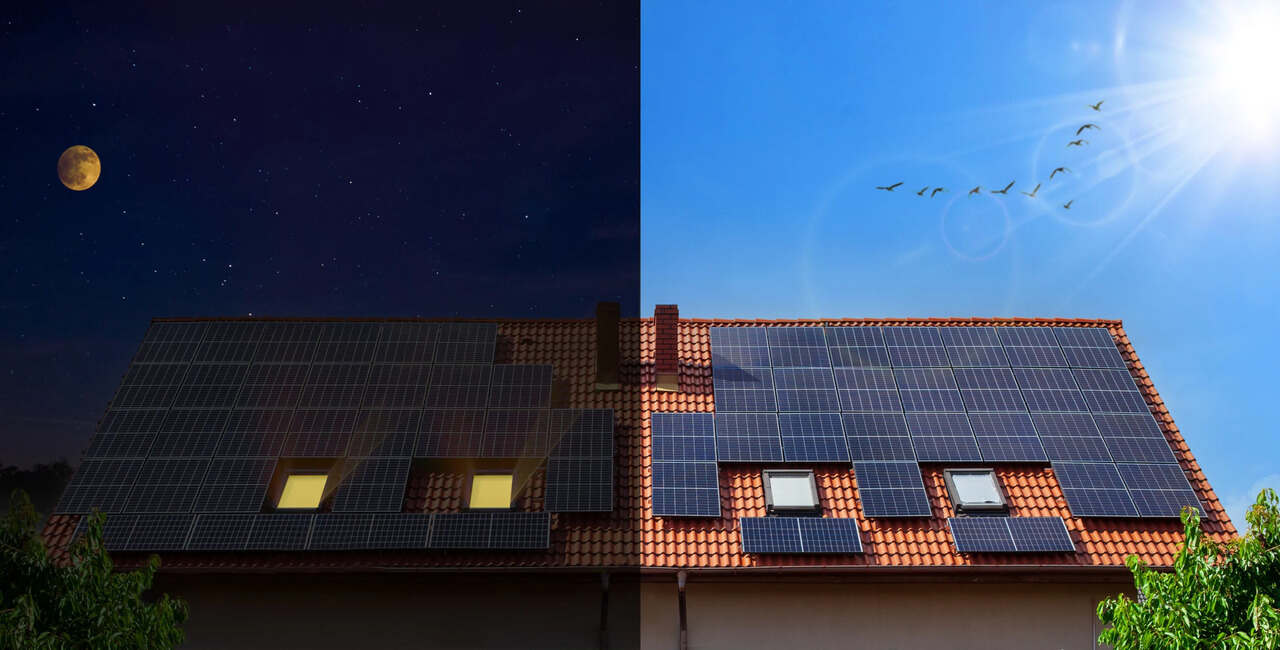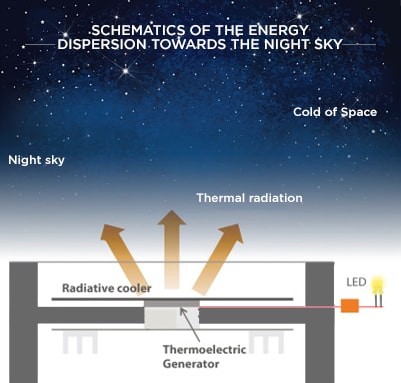
Picture a solar panel that continues to generate electricity even after sunset. Thanks to a new breakthrough, this is no longer a fantasy — scientists have created a photovoltaic (PV) cell that is able to generate power at night through a process known as radiative cooling.
Rather than drawing power from the sun, the panel absorbs heat emanating from its own surface as infrared light and shoots it out into space. An inbuilt thermoelectric generator converts the temperature differential into usable electricity, approximately 50 mW/m² under clear conditions.
The good news is that it's constructed from low-cost, readily available materials, so it might be added onto existing solar panels and installed in remote and off-grid areas. This technology is described in Applied Physics Letters and it might be a game-changer for the 750 million people globally who lack access to reliable electricity.
In this guide, we’ll explore how these nighttime solar panels work, their advantages, potential applications, limitations, and what the future holds for this transformative technology.
No, standard solar panels don't produce electricity during the night since they require sunlight to do that but new technology such as anti-solar panels and radiative cooling PV cells, can generate a little bit of power in the dark by converting radiation from heat into electricity.
Solar power is one of the most renewable sources of energy. Now more people are using solar energy as the main source of power in terms of meeting their energy requirements.
But there is a general skepticism among people about solar panels produce power at night or not. The solar panels function in the sunlight, so the question is, do the houses sit in darkness at night when it is dark and there's no sun, or do they store power for nighttime?

Regular solar panels won't produce electricity at night since they require sunlight in order to generate power but solar panel-equipped households can still be powered at night if they store energy.
How it works:
At night, solar-powered houses can utilize electricity from stored energy from batteries or can draw electricity from the grid if it has no storage.
A fully charged solar battery is usually able to supply power to a house for 10–12 hours after dark, depending on battery capacity, energy consumption, and efficiency. Solar batteries are rechargeable, saving surplus daytime energy to use at night.
No, moonlight do not charge solar panels. Direct sun provides 1,368 watts per square meter, but moonlight contributes 2.3 million times less energy, much too little to produce usable electricity in photovoltaic (PV) cells.
Why It Doesn’t Work
Moonlight is merely sunlight reflected from the surface of the moon. In the process of reflection, much of the energy of the light is lost. By the time it hits Earth, it is so feeble that PV cells cannot generate an appreciable quantity of current. Even in the case of a full moon, the light is not sufficiently bright for human eyes but certainly not for driving electric devices.
Also Read: India’s Largest Solar Power Plant: A Green Revolution 2025

Anti-solar panels generate power by capturing heat emitted by the Earth into space at night. Instead of capturing sunlight as regular panels, it has a thermoelectric generator that pushes electrical energy from the variation in temperature between the panel surface and the cold nighttime sky.
The majority of solar panels turn off once the sun goes down but anti-solar panels are rewriting that. The new technology harnesses the heat emanating from Earth after dark as the source of energy.
By day, standard solar panels absorb photons because the sun's rays are warmer than the surface of the panel. By night, the reverse happens, the Earth emits trapped heat into space's cold vacuum. Anti-solar panels absorb the infrared flow of heat and transform it to electricity using a thermoelectric generator.
UC Davis researchers think this will allow for genuine 24-hour renewable power generation, which is worth it to off-grid systems, nighttime grid support and areas with short daylight hours.
Anti-solar panels is a new renewable technology meant to produce electricity after sunset. It decreases reliance on fossil fuels, it provides a sustainable alternative to supplying global energy needs.
Main advantages of anti-solar panels are:
Current limitations and future potential
Right now, anti-solar panels generate about 25% of the output energy of regular solar panels but through the growing developments in materials, design, and heat conversion technology, their efficiency can compete with or even surpass the traditional systems.

No, solar panels cannot generate electricity at night because they need sunlight to produce power through the photovoltaic effect.
No, moonlight is just reflected sunlight which is way too little to generate power.
Not yet. Nighttime solar panels, which generate electricity through radiative cooling rather than sunlight, are still in the research stage and aren’t commercially available.
They can generate power at night, reduce the need for large batteries, balance energy supply, and work year-round in low light which eases the grid demand during evening peaks.
Radiative cooling PV cells and anti-solar panels are changing the solar industry. These technologies produce electricity at night by capturing and then converting heat radiated from the Earth into electricity, so we don’t have to rely only on sunlight. Anti-solar panels can push the limitations of standard daytime-only solar panel systems and take renewable energy further.
Anti-solar panels currently produce 25% of the power of conventional panels but the rapid improvements are very close to bridging that gap. It can produce clean and carbon-free electricity at night which makes it beneficial for off-grid housing and areas with limited daylight hours.
We could possibly achieve renewable energy for 24 hours by using nighttime solar panels with daytime solar generation. It reduces the reliance on batteries and the grid and can lead to less dependence on fossil fuels and less greenhouse gas emissions, and help communities across the world to access sustainable energy.













